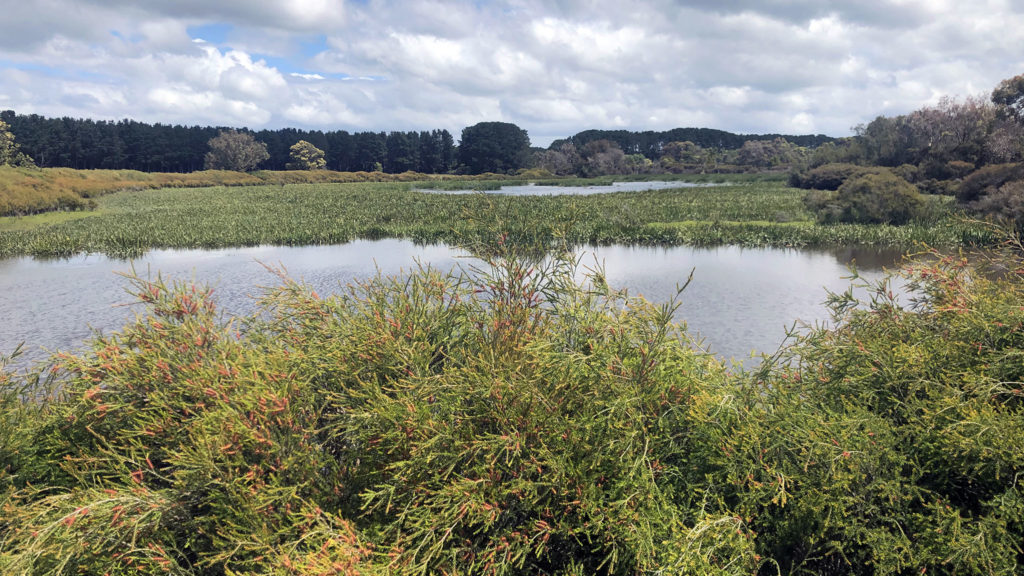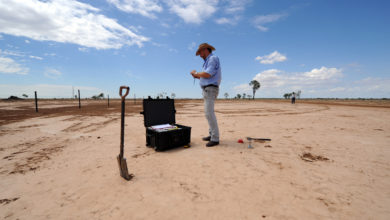
A farewell to John Fenton, Australia’s influential “untrained environmentalist”
David Hay reflects on the legacy of regenerative farmer and forester John Fenton, who passed away last month.
I was fortunate to first hear John Fenton speak when he was a guest lecturer in the early years of my RMIT Landscape Architecture course in the mid-1980s. Professor Jim Sinatra, the head of the course, had recently met John through Graeme Gunn, the Dean of Architecture at RMIT, and a lifelong friend of John’s. Because of these relationships, I feel incredibly lucky to have been part of the course at this time. In retrospect, meeting these men has had a major influence on the direction of my landscape architecture career.
It was not long after John’s lecture that I made my first of many visits to the Fenton family property, ‘Lanark’ near Branxholme in south western Victoria, as part of a rural design studio. As well as farming Lanark, John was a director of Rural Trees Australia (RTA), a farm and rural planning and broadacre revegetation company operating extensively throughout Victoria, eastern South Australia and into southern New South Wales. RTA, in the mid- to late 1980s, was a company far ahead of its time. The company was investing money in mechanical tree planting, indigenous seed collection and direct seeding technologies and using the past 30 years of John’s environmental learning and revegetation experiences on Lanark to apply to their commercial farm and rural planning projects.
After seeing and being totally inspired by Lanark, and learning of RTA’s work, I knew that I wanted to focus on rural and regional landscape architecture in my professional practice.

Along with Don Thomson, we were fortunate to work under John at Rural Trees Australia for three years. The practical grounding we received as graduates was immense. John’s philosophy was to expose us to as much of the business as possible, including spending weeks on site planting trees with the crew, attending field days at Lanark and beyond, to attending meetings with John in Collins Street boardrooms or in the kitchens of farm houses, to present and discuss farm plans with the property owners.
My enduring memory of these work experiences is hearing John talk about the importance of ‘landscape’ and in particular understanding landscape character types. John often spoke about what our unique landscapes would look like if we didn’t understand local landscape character types and how our landscapes are in danger of becoming generic and homogenous – being threatened with losing their uniqueness, if we were to apply a standardised farm planning model. Therefore, the RTA farm plans needed to consider how we could design and implement revegetation strategies that could be applied to say the ‘Red Gum’ country north of Hamilton, the basaltic stony rises country around Skipton, or the open plains country around Branxholme. Each of these landscapes have their own characteristics that we needed to recognise and incorporate into our landscape designs and farm plans. In John’s words, this was “the icing on the cake.”

While we learnt the importance of specifying local provenance tree stock, this is not to say that John was an indigenous plant purist. Far from it. John’s philosophy was more about selecting the right plant, for the right reason, for the right place. Therefore, John would often specify pines, oaks, cedars, hawthorns or black locusts on the RTA plans if he felt that they would enhance the local landscape or historic character of the place.
Agroforestry was another of John’s great interests and areas of expertise. John learnt and shared much from agroforestry field trials that still exist at Lanark today. These trials were initiated by research scientists such as Dr Rod Bird and foresters such as Arthur Lyons. As a result of this research, John stressed the importance of the right tree for the right place, but more specifically the right tree selection and breeding to maximise the future return on investment to the farmer.
We are fortunate that in 2010 John published his important book, The Untrained Environmentalist. This recounts John and Cicely Fenton’s lifetime of experiences in the creation of Lanark from an exposed, barren, treeless and waterless farm to a thriving, ecologically diverse and agriculturally productive landscape.
John and Cicely’s work at Lanark over more than 50 years is significant and provides a legacy that landscape architects and a broad range of other professionals will continue to learn from. John Fenton has had a profound influence on my career. I feel very fortunate that our paths crossed when they did.
David Hay is a director of Thomson Hay Landscape Architects.
Foreground would like to thank Jim Sinatra, Rochelle Rudduck and Mark Bachman for their help in preparing this feature. Their reflections on John Fenton can be found on the Nature Glenelg website here.


